Festive in the world : There are numerous festivals celebrated across the world, many of which are specific to certain regions or cultures.
However, here are some examples of major festivals celebrated around the world with brief descriptions:
Chinese New Year: Also known as Spring Festival, it is the most important festival in Chinese culture and is celebrated in late January or early February.
Diwali: Also known as the Festival of Lights, it is a major Hindu festival celebrated in India and other countries with Hindu populations. It usually takes place in October or November.
Eid al-Fitr: This Muslim festival marks the end of Ramadan, the month of fasting. It is celebrated with feasting and prayer.
Christmas: This Christian festival celebrates the birth of Jesus Christ on December 25th.
Carnival: This festival is celebrated in many countries, including Brazil, Trinidad and Tobago, and Italy. It typically involves parades, music, dancing, and costumes.

Holi: This Hindu festival is also known as the Festival of Colors and is celebrated in India and Nepal in February or March.
Oktoberfest: This beer festival is held annually in Munich, Germany, and attracts millions of visitors from around the world.
Songkran: This is the Thai New Year festival and is celebrated in mid-April with water fights and other festivities.
Hanukkah: This Jewish festival is also known as the Festival of Lights and is celebrated in December.
Día de los Muertos: This Mexican festival, also known as Day of the Dead, honors deceased loved ones with offerings of food, flowers, and other gifts.
Easter: This Christian festival celebrates the resurrection of Jesus Christ and is celebrated in the spring.
Eid al-Adha: This Muslim festival commemorates the willingness of Abraham to sacrifice his son Ishmael and is celebrated with feasting and prayer.
Navratri: This Hindu festival is dedicated to the worship of the goddess Durga and is celebrated in India in September or October.
Bon Festival: This Buddhist festival is celebrated in Japan in mid-August and is a time for honoring the spirits of ancestors.
La Tomatina: This Spanish festival involves a giant tomato fight that takes place in Buñol, Spain, on the last Wednesday in August.
Passover: This Jewish festival commemorates the liberation of the Israelites from slavery in ancient Egypt and is celebrated in the spring.
St. Patrick's Day: This Irish festival is celebrated on March 17th in honor of Saint Patrick, the patron saint of Ireland.
Mardi Gras: This festival is celebrated in many countries, including the United States, Brazil, and France, and is typically associated with parades, costumes, and revelry.
Wesak: This Buddhist festival is celebrated in many countries in May and commemorates the birth, enlightenment, and death of the Buddha.
The Notting Hill Carnival: This street festival takes place in London, England, over the August bank holiday weekend and celebrates Caribbean culture with music, dancing, and food.
Kumbh Mela: This Hindu festival is the largest gathering of people on Earth and is celebrated every 12 years in Inldia. Pilgrims come to take a holy dip in the river, which is believed to wash away sins.
Vesak: This Buddhist festival is celebrated in many countries and commemorates the birth, enlightenment, and death of the Buddha.
Hanami: This Japanese festival celebrates the blooming of cherry blossoms in the spring and is a time for picnicking and enjoying the beauty of nature.
Eid al-Ghadir: This Muslim festival commemorates the appointment of Ali ibn Abi Talib as the successor to Prophet Muhammad and is celebrated with feasting and prayer.
Day of the Dead: This festival is celebrated in many Latin American countries, including Mexico, and is a time for honoring deceased loved ones with offerings of food, flowers, and other gifts.
Songkran: This Thai festival marks the beginning of the Thai New Year and is celebrated with water fights and other festivities.
Bonfire Night: This British festival is also known as Guy Fawkes Night and commemorates the failed Gunpowder Plot of 1605 with fireworks and bonfires.
Raksha Bandhan: This Hindu festival celebrates the bond between brothers and sisters and is celebrated with the tying of a sacred threa.
La Mercè: This Catalan festival is celebrated in Barcelona, Spain, in honor of the city's patron saint, La Mercè.
Mid-Autumn Festival: This Chinese festival is celebrated in September or October and is a time for families to gather, eat mooncakes, and enjoy the full moon.
Glastonbury Festival: This British music festival takes place over five days in June and is one of the largest and most famous music festivals in the world.
Onam: This Indian festival is celebrated in the state of Kerala and marks the harvest season. It is celebrated with feasting, traditional dance, and other festivities.
Eid Milad-un-Nabi: This Muslim festival celebrates the birthday of the Prophet Muhammad and is celebrated with feasting and prayer.
Hallowe'en: This festival is celebrated on October 31st and is associated with costumes, jack-o'-lanterns, and other spooky traditions.
Day of the Sun: This North Korean festival commemorates the birth of the country's founder, Kim Il-sung, and is celebrated with parades and other festivities.
Hanukkah: This Jewish festival is also known as the Festival of Lights and is celebrated in December with the lighting of the menorah and other traditions.
St. Lucia Day: This Swedish festival is celebrated on December 13th and marks the beginning of the Christmas season with the lighting of candles and other traditions.
Bastille Day: This French festival is celebrated on July 14th and commemorates the storming of the Bastille during the French Revolution.
Obon: This Japanese festival is celebrated in August and is a time for honoring the spirits of ancestors with offerings of food and other gifts.
Eid al-Adha: This Muslim festival marks the end of the Hajj pilgrimage and is celebrated with feasting and prayer.
Day of Arafat: This Muslim festival is observed on the ninth day of the Islamic month of Dhu al-Hijjah and is considered the most important day of the Hajj pilgrimage.
Festa Junina: This Brazilian festival is celebrated in June and marks the midwinter season with traditional food, dance, and music.
Inti Raymi: This Incan festival is celebrated in Peru and marks the winter solstice with traditional rituals and ceremonies.
Mawlid al-Nabi: This Muslim festival celebrates the birth of the Prophet Muhammad and is celebrated with feasting and prayer.
Qingming Festival: This Chinese festival is also known as Tomb Sweeping Day and is a time for honoring ancestors by visiting their graves and making offerings.
Rosh Hashanah: This Jewish festival marks the beginning of the Jewish New Year and is celebrated with prayer, feasting, and other traditions.
Semana Santa: This Christian festival is celebrated in many countries, including Spain and Mexico, and marks the week leading up to Easter with traditional processions and other traditions.
Carnival: This festival is celebrated in many countries, including Brazil, Italy, and Trinidad and Tobago, and is a time of elaborate parades, costumes, and other festivities.
Dia de los Muertos: This Mexican festival is also known as the Day of the Dead and is a time for honoring deceased loved ones with offerings of food, flowers, and other gifts.
Dragon Boat Festival: This Chinese festival is celebrated in June and is a time for dragon boat races, traditional food, and other festivities.
Kwanzaa: This African-American festival is celebrated in late December and is a time for honoring African heritage and values with traditional customs and rituals.
Midsummer Festival: This Scandinavian festival is celebrated in June and marks the summer solstice with traditional rituals and ceremonies.
Pongal: This South Indian festival is celebrated in January and marks the harvest season with traditional food, dance, and music.
Vesakhi: This Sikh festival is celebrated in April and marks the New Year with traditional customs and rituals.
Songkran: This Thai festival is celebrated in April and is a time for water fights, traditional food, and other festivities.
Carnival of Venice: This Italian festival is celebrated in February and is known for its elaborate masks and costumes.
Fête de la Musique: This French festival is celebrated in June and is a time for free music concerts and other musical events.
Ganesh Chaturthi: This Hindu festival is celebrated in India and other countries and honors the elephant-headed deity Ganesha with traditional customs and rituals.
La Mercè: This Spanish festival is celebrated in Barcelona and is a time for traditional music, dance, and other festivities.
Loy Krathong: This Thai festival is celebrated in November and is a time for floating baskets made of leaves and flowers on waterways to honor the goddess of water.
Naadam: This Mongolian festival is celebrated in July and is a time for traditional sports, including horse racing, archery, and wrestling.
Nowruz: This Persian festival is celebrated in Iran and other countries and marks the New Year with traditional customs and rituals.
Pahela Baishakh: This Bengali festival is celebrated in Bangladesh and other countries and marks the New Year with traditional food, dance, and music.
Pushkar Camel Fair: This Indian festival is held in November and is a time for traditional music, dance, and the buying and selling of camels.
Sakura Matsuri: This Japanese festival is celebrated in April and is a time for celebrating the blooming of cherry blossoms with traditional food and music.
Sunburn Festival: This Indian festival is held in December and is a time for electronic dance music performances by local and international artists.
Thaipusam: This Hindu festival is celebrated in India and other countries and honors the deity Murugan with traditional customs and rituals.
The Carnival of Basel: This Swiss festival is celebrated in February and is known for its elaborate costumes and masks.
The Lantern Festival: This Chinese festival is celebrated in February or March and marks the end of the Chinese New Year with traditional lantern displays and other festivities.
The Running of the Bulls: This Spanish festival is held in Pamplona in July and is a time for running with bulls through the streets.
Winterlude: This Canadian festival is held in Ottawa and is a time for ice sculptures, ice skating, and other winter activities.
Day of the Dead Parade: This Mexican festival is celebrated in Mexico City and is a time for honoring deceased loved ones with a parade of giant skeleton puppets.
Festa del Redentore: This Italian festival is celebrated in Venice and is a time for fireworks, a regatta, and other festivities.
Gion Matsuri: This Japanese festival is celebrated in Kyoto and is a time for traditional parades, music, and dance.
Hmong New Year: This festival is celebrated by the Hmong people in several countries and marks the end of the harvest season with traditional customs and rituals.
La Batalla del Vino: This Spanish festival is held in Haro and is a time for a wine battle, where participants spray each other with red wine.
Lantern Floating Hawaii: This festival is celebrated in Hawaii and is a time for floating lanterns on the water to honor deceased loved ones.
Rio Carnival: This Brazilian festival is known for its elaborate parades, costumes, and samba dancing.
Songdo International City Airshow: This festival is held in South Korea and is a time for an airshow with aerial acrobatics and other aviation displays.
Sapporo Snow Festival: This Japanese festival is held in Sapporo and is a time for giant snow sculptures, ice-skating, and other winter activities.
The Battle of the Oranges: This Italian festival is held in Ivrea and is a time for a massive orange fight, reenacting a historic revolt against tyrants.
The Lantern Festival of Pingxi: This Taiwanese festival is a time for releasing sky lanterns with written wishes into the air.
The Venice Biennale: This Italian festival is held every two years and is a time for contemporary art exhibits and installations from around the world.
The Yee Peng Festival: This Thai festival is a time for releasing lanterns into the air and honoring the Buddha.
Tomorrowland: This Belgian festival is known for its electronic dance music performances and elaborate stage designs.
Wacken Open Air: This German festival is known for its heavy metal music performances and attracts fans from around the world.
Copyright © 2023 General Knowledge | https://yourfeeknowledge.blogspot.com/


















.jpg)



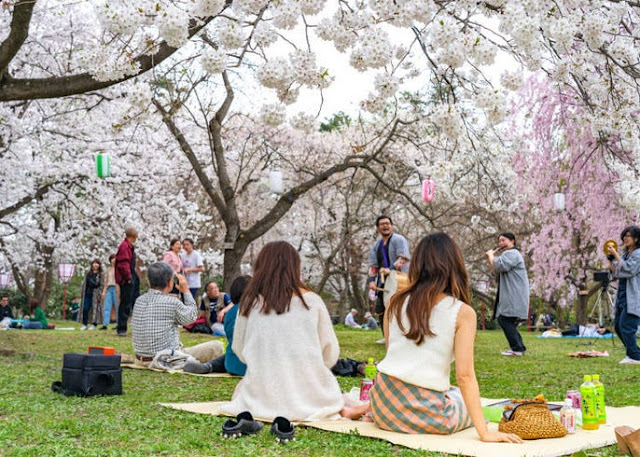

















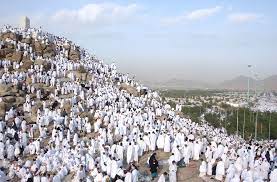










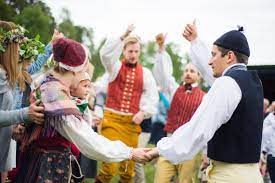

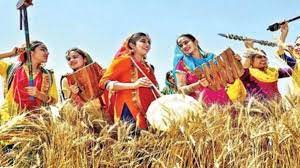














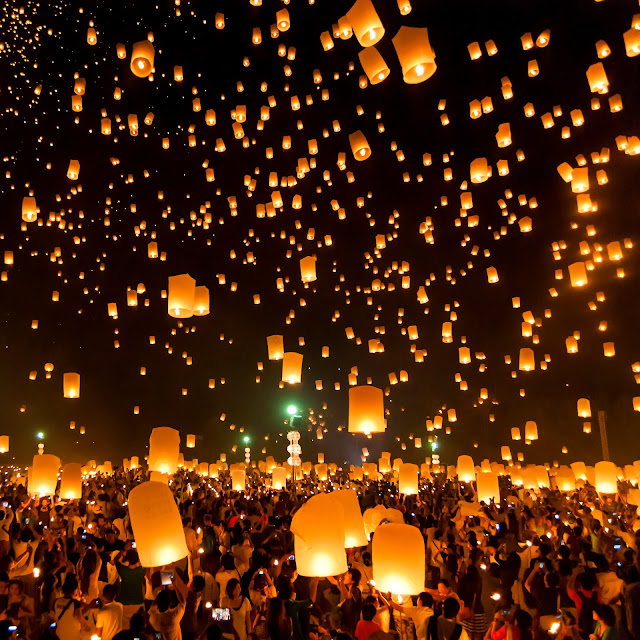

















Comments